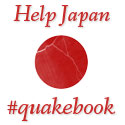November 9th 2007
Today I went on a little course to gain some insight into the beautiful Japanese lettering, kanji.
It appears I cannot learn a language unless I can see the words written down. For example, with hard-won O levels in French & German, a smattering a Latin and an evening crash course in Latin American Spanish, I can read quite a bit of these languages, even though I can't speak them anymore. It also means I can work out some Italian and Dutch words, according to their roots.
However, this method is obviously not going to work in Japan!
Even though it was absolutely fascinating, I was hoping to be able to learn how to read the words, but the course centred on the evolution of the characters and their individual meanings rather than their pronunciation.
This site shows the sort of things I learned today.
Since then I've picked up a few more but don't necessarily know the sound AND the meaning, usually one or the other.
So I know that this 出口 means exit – very useful in the enormous underground car parks or train stations. Another useful one is 東京 meaning Tokyo.
This 分 means "minutes" and we worked that one out from various food cooking instructions. Don't know the sound – we call it the "jellyfish", so "boil for 7 jellyfishes" is now a standard comment here.
山 is "mountain" so I presume (for most of the time) that it's pronounced "yama" as in Fuji-yama. But I fully realise that this is doing the Japanese language, both written and spoken, a huge disservice. It seems that all the individual symbols have numerous meanings and sounds depending on the other kanji around them.
北 means north – and I also learned east and west but can't find the characters in my symbols list – sorry! We weren't taught south as apparently it was too complicated. Feel free to Google to learn for yourself!
There are more than 60,000 kanji. Children have to learn 1,006 kanji before they reach the end of primary school! Can you imagine?! To be able to read most books and newspapers you'd need to know 1,945 kanji.
The Japanese government have a kanji proficiency test for scholars. Apparently the highest score has been 6,000. So what's happened to the other 54,000? Does anyone know them?
Oh, and as well as kanji, there are hiragana and katakana to learn!
Katakana is used for foreign words, so my name looks like this: キャロル ハレット モッブス
On my meishi – business card - my name appears as above, most of my address is written in kanji because it's "original" Japanese, while "House" is written thus ハウス
I don't stand a chance, do I?!
